Oh, yes! The queer creator of Webcomic Name on challenging gender one pink blob at a time

An exclusive Webcomic Name comic for PinkNews. (Courtesy of Alex Norris)
Like many queer and gender non-conforming people, Alex Norris – creator of Webcomic Name – is no stranger to questions about gender.
The difference is, Alex is often not being asked about their own gender, but about the gender of their most famous creation: the ‘oh no’ blob from Webcomic Name.
“People always go, ‘Is it a boy or a girl?’ and I’ll be like, ‘Yes,'” Alex says.
“It is all of those things. I did a joke about finding it difficult to shop for bras and everyone was like, ‘Oh, the blob is a girl! That makes sense, because they’re pink.’ So the next comic I did was about shaving a beard.”
Drinking a soy-milk cappuccino outside their east London studio, Alex explains how the protagonist of Webcomic Name – a pink, optimistic blob that serves the same punchline in every three-panel strip – is supposed to be so generic that anyone can relate to it.
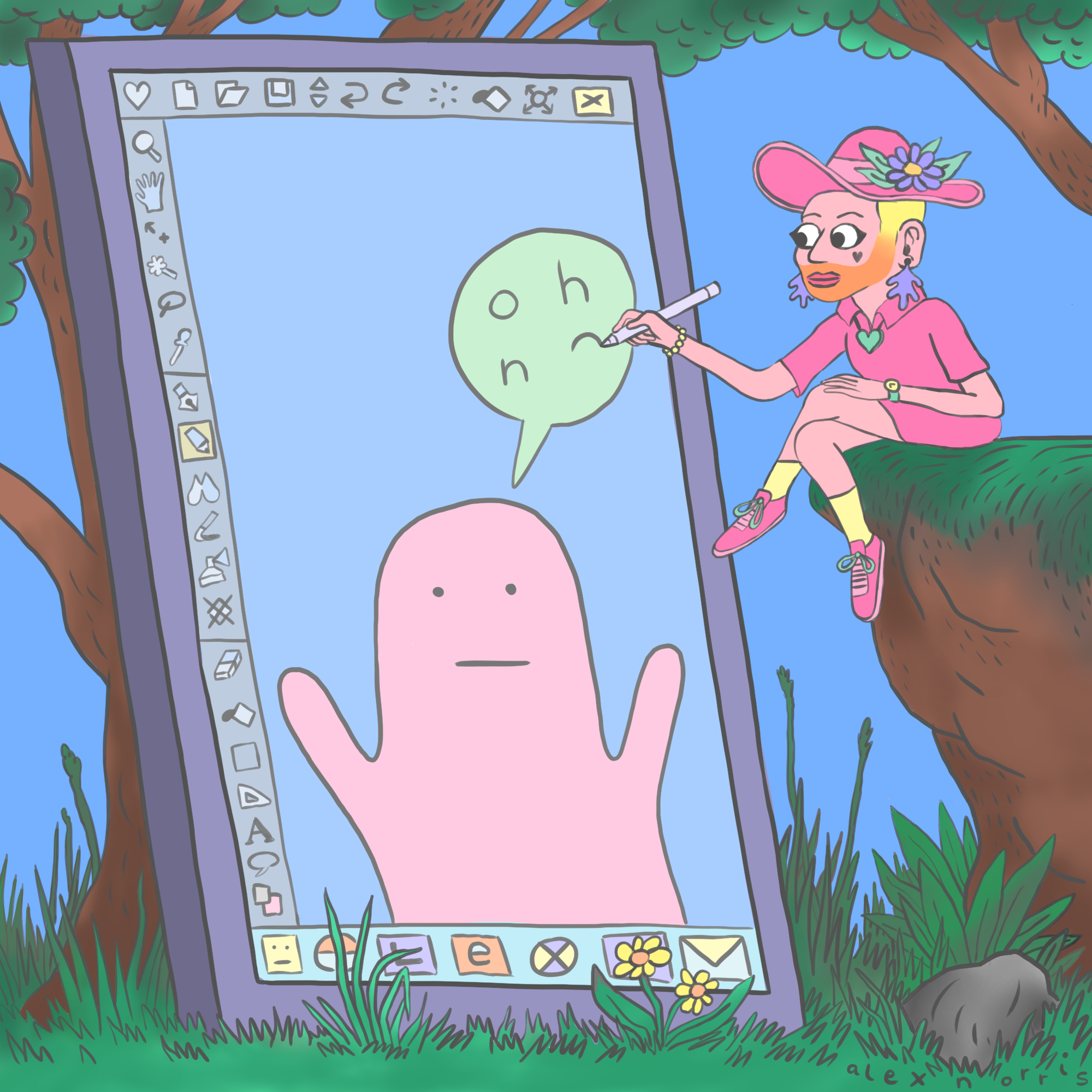
Self-portrait of Alex drawing the pink blob from Webcomic Name. (Courtesy of Alex Norris)
But although the pink blob isn’t supposed to have one at all, everyone always wants to know what gender it is.
“I used to be annoyed that people would want to know, that people were asking about the gender [of the blob]. I’d be like, ‘It doesn’t matter, why do you care?'” Alex says. “People ask the same thing about me. People really care about what gender you are!”
People really care about what gender you are!
The deliberately genderless – or “genderful”, as Alex puts it – pink blob might simply have begun as an attempt to make the “ultimately relatable” character, but this gender ambiguity has come to reflect Alex’s own queerness.
But this wasn’t their intention. After “going viral”, Alex’s comics became more and more popular and their queerness – which was initially wholly separate from their work – began to be something that influenced their output.
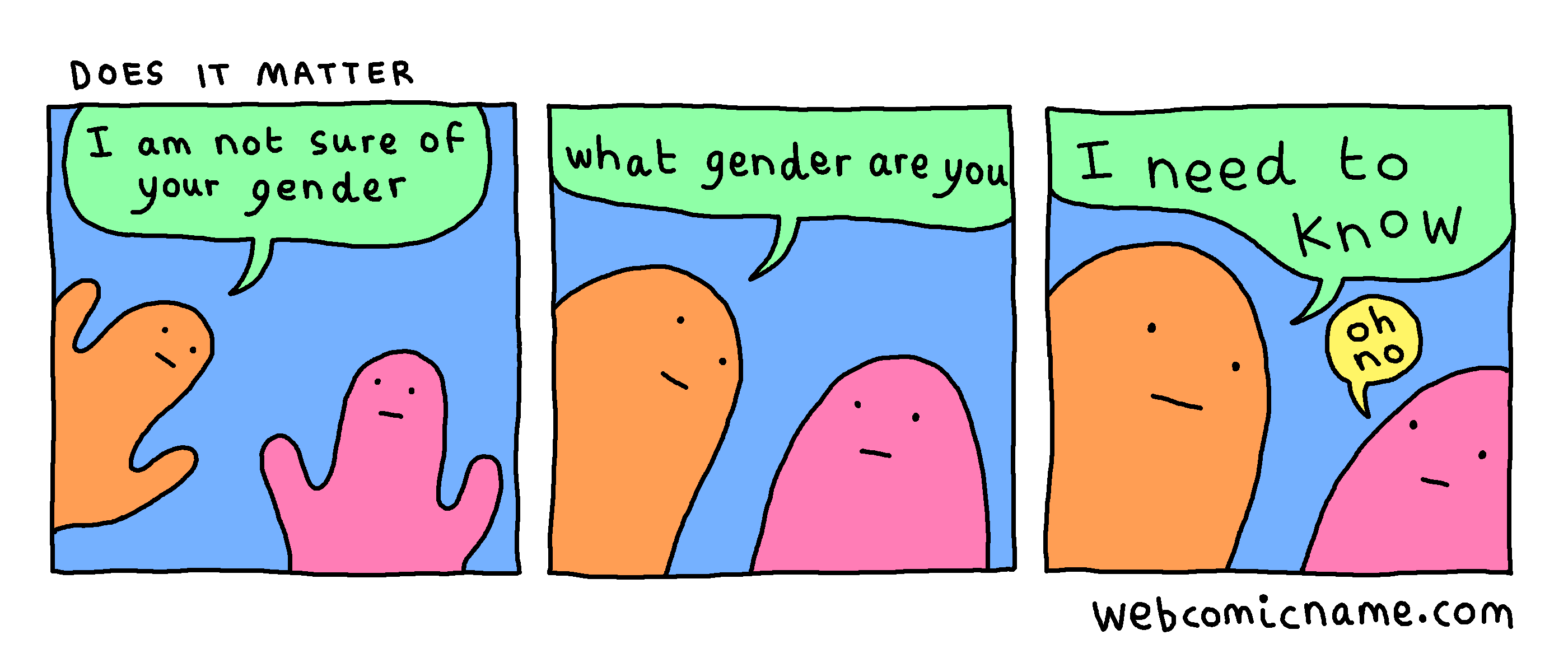
Alex and the pink blob both get a lot of inquiries about their gender. (Courtesy of Alex Norris)
When Webcomic Name went viral for the first time it was ‘overwhelming’.
Alex, who is originally from Swansea in Wales, began Webcomic Name in 2016. The series was meant to parody webcomics, with a simple three-panel comic and the same punchline making it an easy and quick way of creating art.
After finishing their English degree at Bristol university, they recall how a comic they put on Tumblr – a site where, at that time, they still only had a small audience – did really well.
“I was getting notifications every couple of seconds and I didn’t know how to change my settings,” Alex says, explaining that, like most people on social media, they still had their notifications set to buzz every time someone liked their post or followed them.
“There was another time I went viral quite soon after, I think it was at the Edinburgh Fringe… it becomes really overwhelming,” they say. “But then the next post you do it goes back to normal – you maybe get a few more likes than before, but then you realise it’s all meaningless, it’s all very temporary.”
It’s all meaningless, it’s all very temporary.
They were quick to learn not to attach too much meaning – or feelings of self-worth – to numbers on the internet.
“Once you get to a certain level, going viral means something slightly different. Now, if I do a comic and it becomes a news story – which I’ve seen happen to other people – then that’s like, the next level of going viral. It becomes a cultural moment.”
‘Hello, queer internet.’
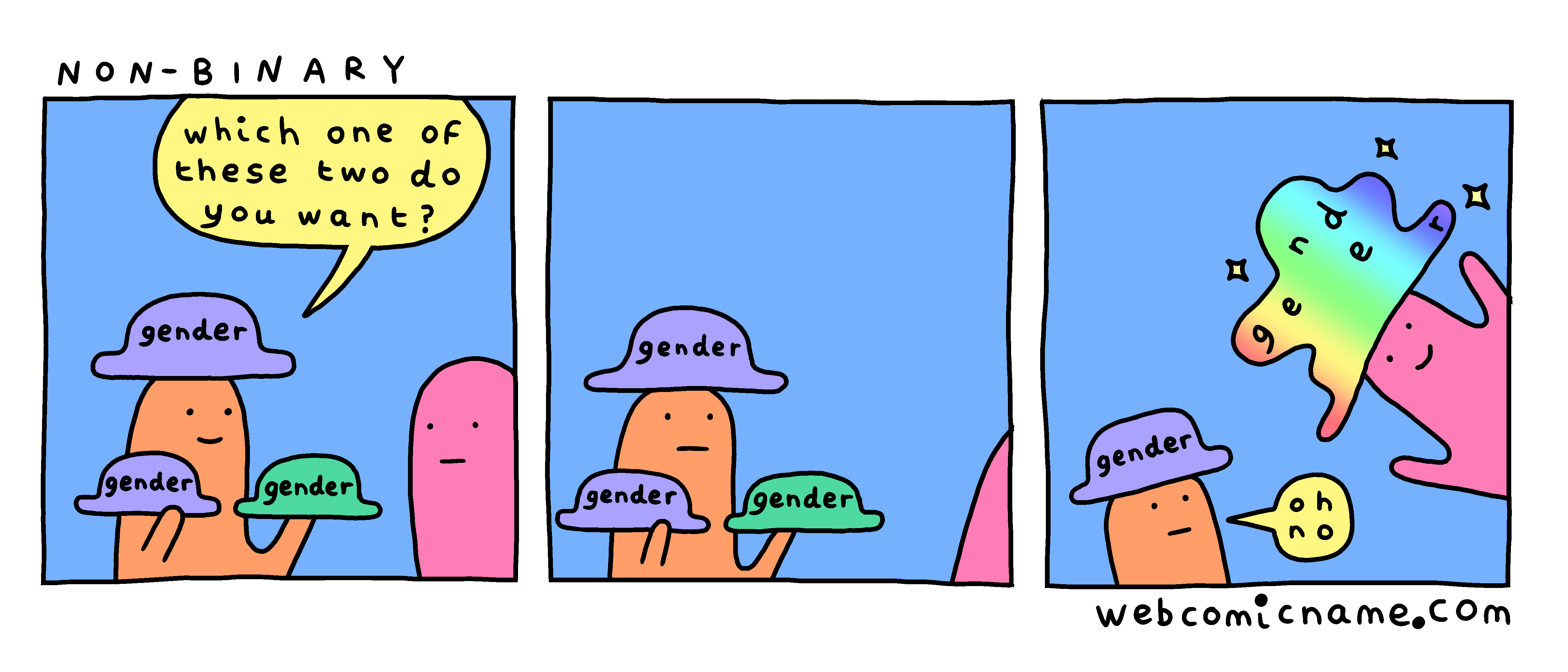
Alex’s comic about non-binary gender identities spread fast among the queer community. (Courtesy of Alex Norris)
Alex’s work and the pink blob didn’t initially touch on LGBT+ issues, but – in an extremely relatable way – the boundaries between personal and professional inevitably blurred.
“I did that non-binary comic, and that was intentionally being like, ‘Hello, queer internet.’ Like, I am doing stuff for that now,” Alex says.
This followed years of them inhabiting the queer internet but not necessarily making work for it. What they were seeing on their feed was web comics and then “the sex-positive and feminist internet and the queer internet”.
“So, I was like, I want to reach the people whose work I read. It’s nice intentionally doing that,” they say.
“There was definitely a point about a year ago where I realised I was trying not to be stuff – I was trying not to be a stereotypical boy, and I also couldn’t be a stereotypical woman because [laughs] I don’t look very good without a beard.”
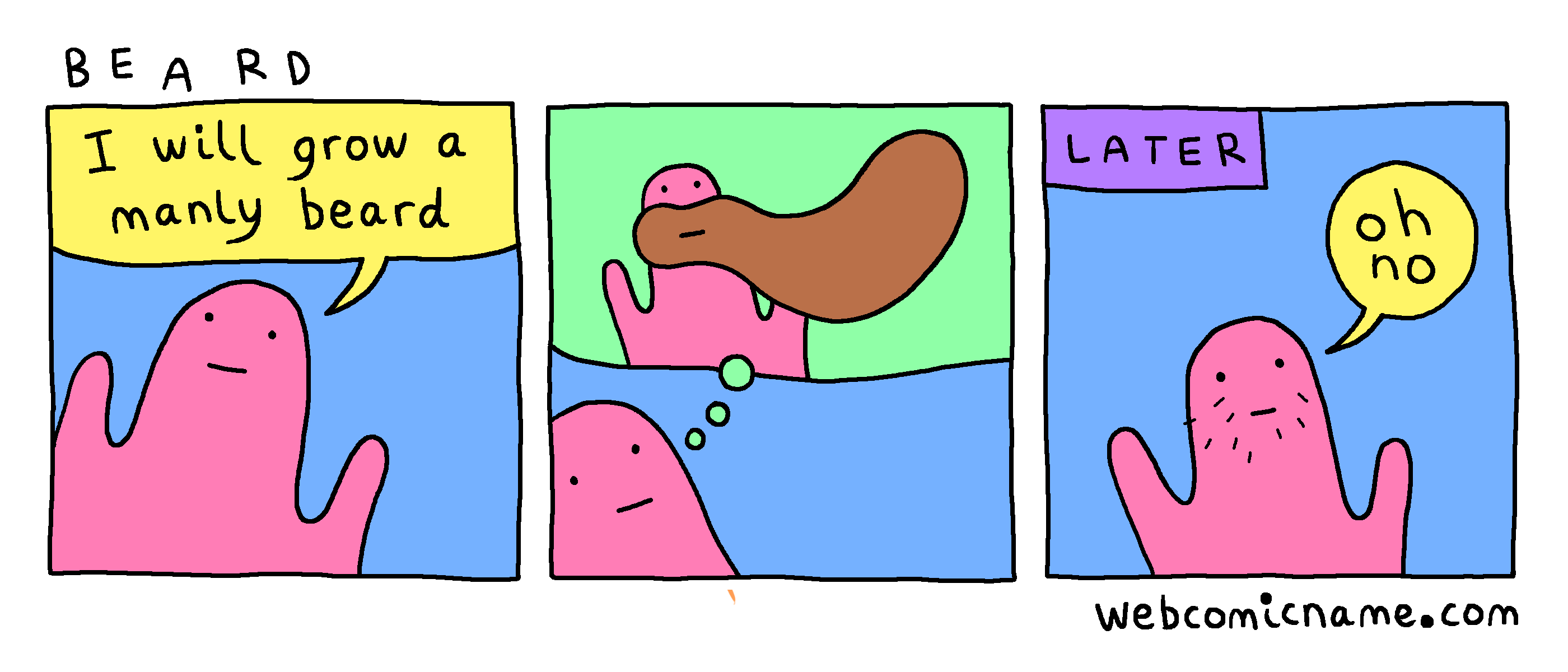
Alex published a comic about growing a beard after the comic about bra-shopping to deliberately play with their audience. (Courtesy of Alex Norris)
Queer – used by many younger LGBTI+ people to describe having a gender and sexuality that are not straight and/or not strictly cis – was a word that Alex began using to describe themselves.
“I asked some friends and they identified as queer. It was the first time I identified as something, not as not something. So I’ve got a lot of love for that word,” they say. But it took them some time to unpack what the word really meant to them.
[Being queer] was the first time I identified as something, not as not something.
“It wasn’t until a while later that I realised that meant a lot to me in terms of gender fluidity,” they say, adding that while they initially thought their playful gender expression – then beginning to be mirrored by the pink blob – was for artistic reasons, they came to see that it was a lot more than that.
“I do identify with femme, and I love camp as a thing. I used to say effeminate. When I was 18 I kind of became camp, but I think that was a kind of femme-ness within being a man, or being a boy at the time.
“Which I think I still have. I definitely identify more with femme than I do with masc, in many ways. I think I’m more girly in most ways but learning to love my boyishness.”
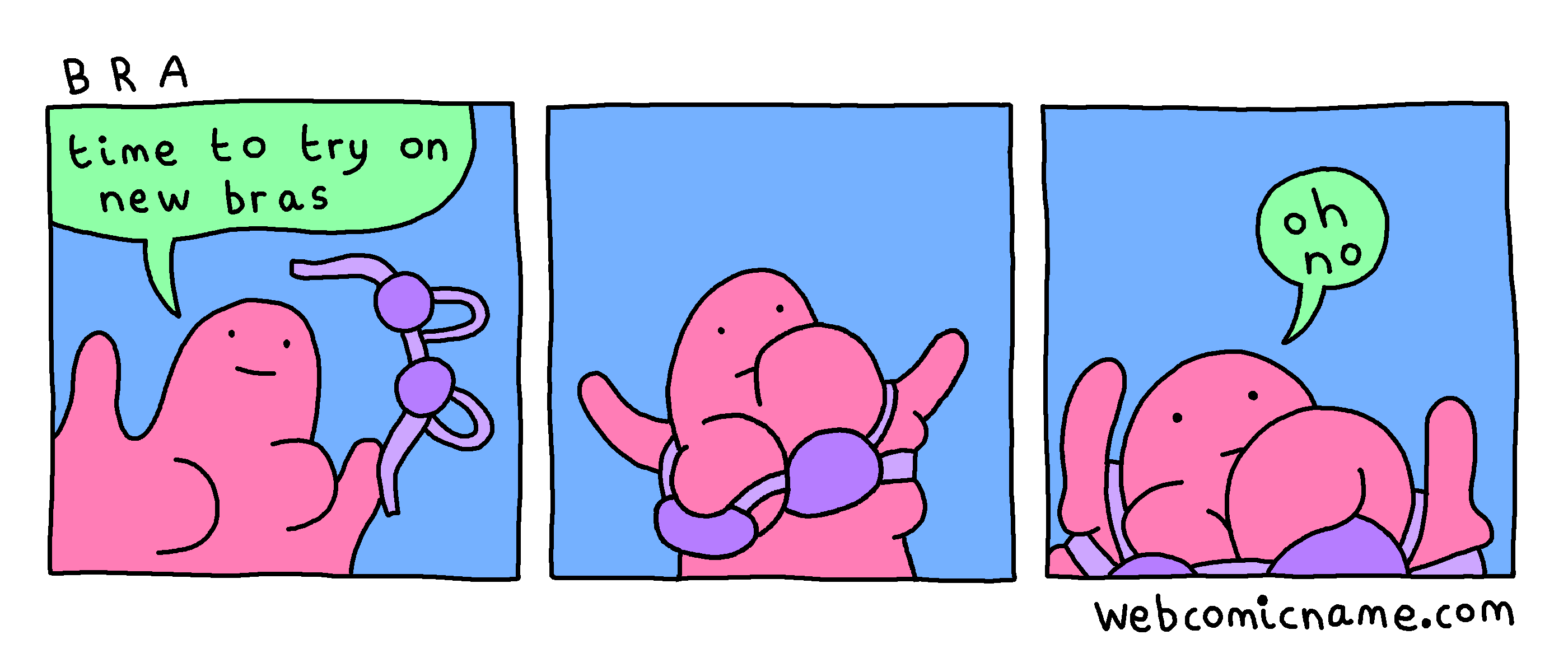
People assumed the pink blob was meant to be female after Alex published this comic about bra-fitting. (Courtesy of Alex Norris)
Just as their experiences ended up in the comics, Alex learned a lot about their gender from the pink blob: “It was weird realising something about myself through looking at my own stuff. But that was definitely something I realised.”
“Occasionally I’ll meet someone who’s got, do you ever meet someone who’s got a similar gender to you?” Alex asks at one point during our interview, going on to describe what it feels like for them to meet someone with a similar gender.
“I’ll be like, ‘Oh, s**t, you’re doing the things that I’m doing!’ And you realise how rare that is, because queer people obviously are just a huge mashup of different people. When it does happen it’s really validating.”
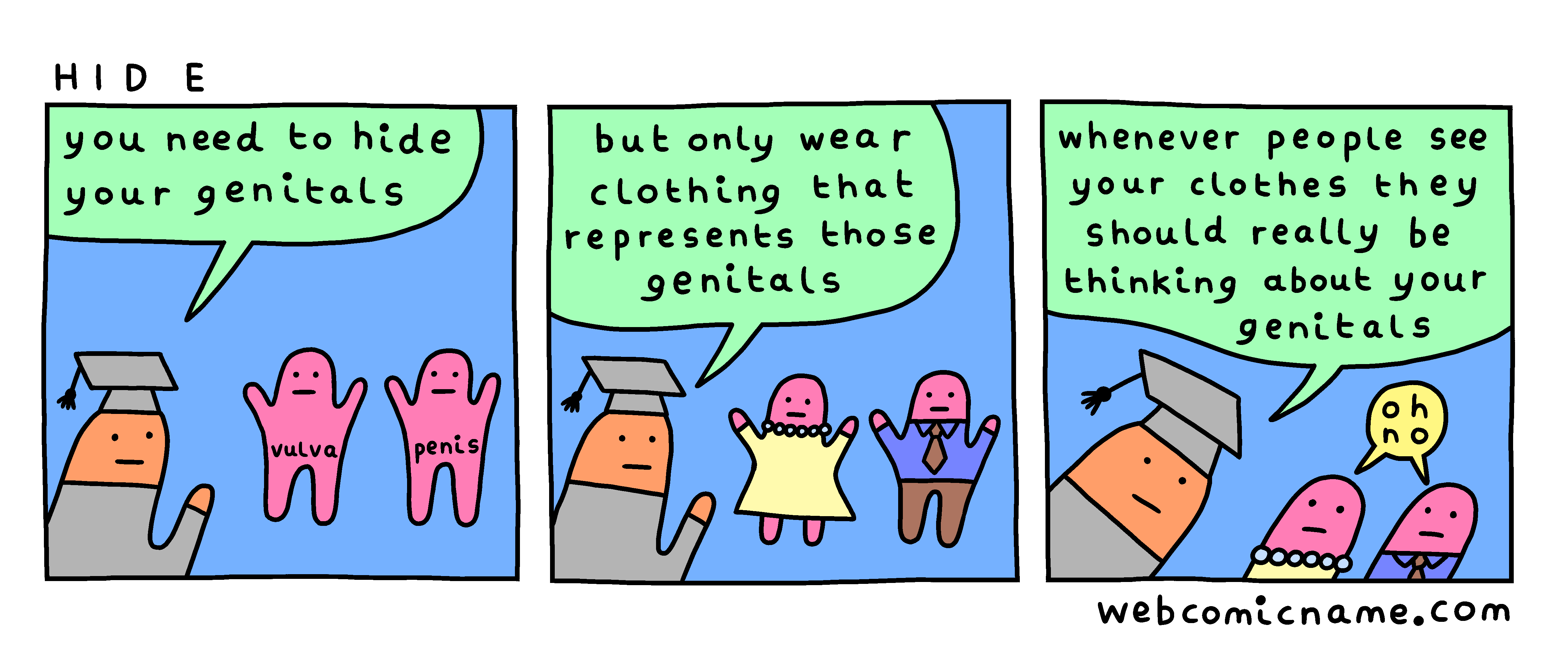
Commenting on how gender is policed. (Courtesy of Alex Norris)
Next up? Erotic comics.
Alex already has an erotica comic series, for Patreon members only, where the “Oh No” pink blob turns into a sexy “Oh Yes” pink blob.
“That’s the most queer thing I’ve done,” they say. “I framed it as an erotica, but it’s just very silly, sex-positive drawings of you know, genitals and things, blobs with silly penises and vulvas and things.”
“It’s being playful with sexuality and genders,” they say – a natural evolution for a comic strip by a queer artist.
“My plan for Webcomic Name from the beginning was always to at some point make an erotica of it, to make a really wholesome series and then make a full erotica, which will basically be a blob who starts out in a dead-end relationship with a boring sex life and they’re like, ‘oh, no’, and then they explore and it’s like, they can have really wild sexual adventures.”
The pink blob’s sexual adventures are wild, but also very queer – enthusiastic consent plays a big role.
As Alex puts it: “Sex should be an ‘oh, yes’; it should be a firm ‘oh, yes’, an enthusiastic ‘oh, yes’.”
Follow Alex’s work on Instagram and Twitter or support them on Patreon.

